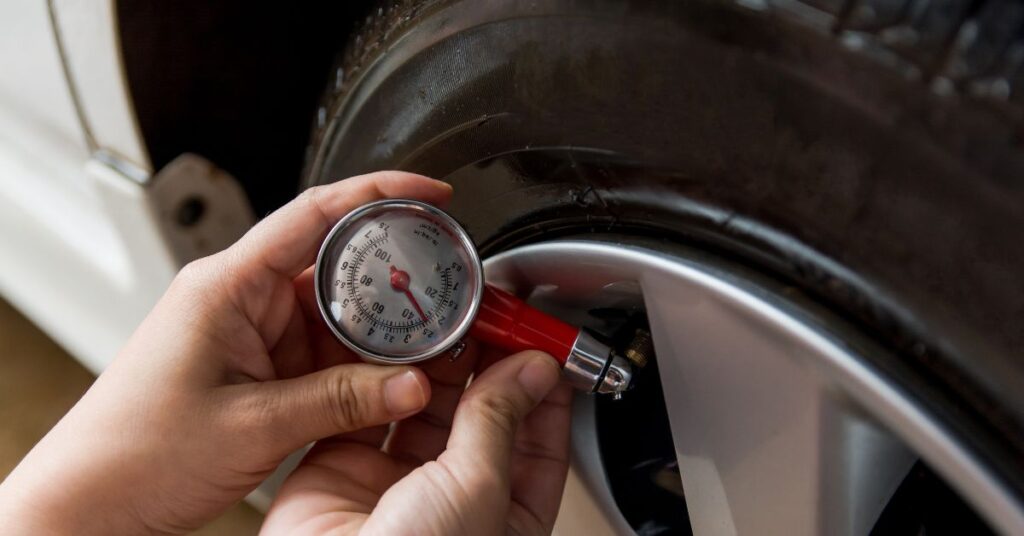
Table of Contents
When the chill of winter sets in, it’s not just us who feel the cold—our vehicles do, too. Tire pressure is one of the most critical yet often overlooked aspects of car maintenance in cold weather. The impact of low temperatures on tire pressure can be significant, affecting everything from fuel efficiency to safety. This article delves deeper into why this happens, the risks involved, and how you can manage your tire pressure effectively during the colder months.
The Science Behind Tire Pressure and Temperature
This section will explore the scientific relationship between temperature and air pressure, explaining why tire pressure decreases in cold conditions. By grasping these fundamental concepts, you’ll be better equipped to manage and maintain your tire pressure effectively throughout the colder months, ensuring optimal vehicle performance and safety.
The Physics of Air Pressure in Tires
Understanding the relationship between tire pressure and temperature begins with a fundamental principle of physics—the ideal gas law. It states that the pressure of a gas is directly proportional to its temperature when the volume is constant. In practical terms, as the temperature drops, the air inside your tires contracts, leading to decreased pressure.
Temperature Fluctuations and Pressure Variability
While a rule of thumb is a 1-2 psi drop for every 10 degrees Fahrenheit decrease in temperature, this can vary based on factors like the type of tire, the vehicle’s weight, and the initial tire pressure. This variability underscores the importance of regular pressure checks as the season changes.
Risks Associated with Low Tire Pressure in Cold Weather
Maintaining the correct tire pressure is not just a matter of prolonging tire life and ensuring a smooth ride – it’s a crucial safety issue, especially in cold weather. This section will detail the risks associated with low tire pressure during winter. From compromised vehicle handling to increased wear and tear on your tires, understanding these risks is vital.
Safety Concerns
One of the primary risks of low tire pressure is compromised safety. Under-inflated tires can lead to poor handling and longer stopping distances, particularly on slick, icy roads—a common scenario in winter.
Impact on Tire Longevity and Performance
Tires with insufficient pressure wear down more quickly and unevenly. This shortens their lifespan and affects the vehicle’s overall performance, including its ability to transfer power from the engine to the road efficiently.
Decreased Fuel Efficiency
Under-inflated tires increase rolling resistance, so your engine needs to exert more effort to move the vehicle, consuming more fuel. Maintaining the correct tire pressure is an easy way to ensure optimal fuel efficiency.
Best Practices for Tire Pressure Management in Cold Weather
Adapting our vehicle maintenance routine to suit the changing conditions is essential as temperatures dip. This section provides practical and effective tips for managing tire pressure during the cold months. Here, you’ll find guidance on monitoring and adjusting your tire pressure to ensure optimal performance and safety.
Regular Monitoring
Check your tire pressure regularly during the winter months. Ideally, this should be done monthly and during significant temperature changes. Early morning is the best time to check tire pressure since the tires are cold, and the readings are most accurate.
Correct Inflation
Always adhere to the manufacturer’s recommended tire pressure. This information is typically found in the owner’s manual or on a placard inside the driver-side door.
Using the Right Equipment
Use a reliable tire pressure gauge to get accurate readings. Digital gauges are generally more accurate and easier to read than their analog counterparts.
Understanding TPMS
Modern vehicles often have a Tire Pressure Monitoring System (TPMS), which alerts you when tire pressure is low. While TPMS is a helpful tool, it should not replace manual checks, as it may only trigger once the pressure is significantly low.
Schedule Tire Service With McCullough NAPA Today
As the cold season approaches, ensuring your tires are in prime condition is crucial for your safety and vehicle efficiency. Don’t let the winter weather catch you off guard. Schedule a tire service with McCullough NAPA Auto Care today. Our experienced technicians will provide comprehensive tire inspections, pressure adjustments, and advice on the best tire choices for your vehicle, tailored to the winter conditions.
Trust us to help you navigate the colder months with confidence and peace of mind. Contact McCullough NAPA Auto Care now to prepare your vehicle for the challenges of winter driving.

